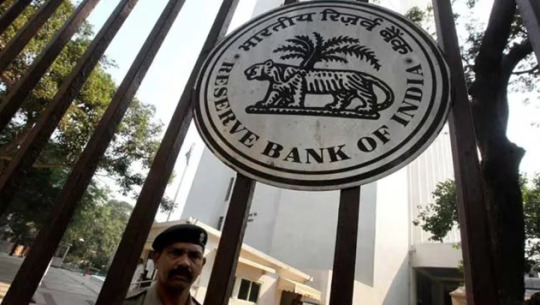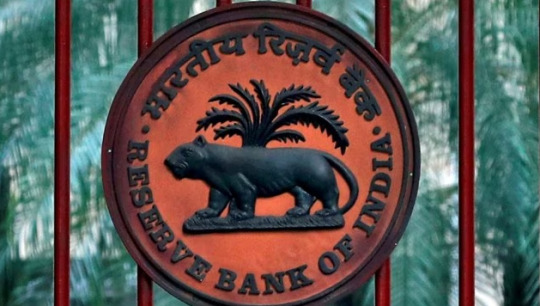#rbi regulations
Explore tagged Tumblr posts
Text
#rbi guidelines#rbi regulations#sebi guidelines#sebi regulations#corporate news#corporate news june#corporate news 2020#india corporate news#indian corporate news#financial consultant#financial consulting services
0 notes
Text

As additional individuals go to charge cards for their buys, state run administrations and banks are setting up rules to shield customers and keep the monetary framework stable. These actions remember drawing certain lines for financing costs, ensuring Visa terms are straightforward, and safeguarding individuals from unjustifiable practices like secret charges or deceiving promoting. Accordingly, Visa organizations might change their contributions, holding back nothing and offering instructive assets to assist individuals with dealing with their funds better. These activities intend to establish a more pleasant and safer climate for utilizing charge cards.
0 notes
Text
Supreme Court Decision on Credit Card Interest Rates: Freedom for Banks within Indian Regulations
In a landmark judgment, the Supreme Court of India has reversed a 2008 ruling by the National Consumer Disputes Redressal Commission (NCDRC) that barred banks from charging more than 30% annual interest on overdue credit card payments. This decision allows banks to determine their own rates within existing regulatory frameworks, marking a pivotal moment in the ongoing debate over consumer protection and market freedom.
A bench comprising Justices Bela M. Trivedi and Satish Chandra Sharma set aside the NCDRC’s decision, which had declared high interest rates on overdue credit card payments as an unfair trade practice. The ruling came in response to appeals by several major banks, including Standard Chartered Bank, Citibank, and HSBC, contesting the NCDRC’s cap on interest rates. Justice Trivedi, delivering the verdict, stated, “In view of the foregoing reasons, the judgment of the NCDRC is set aside, and appeals are allowed.” The Supreme Court had already stayed the NCDRC order on February 3, 2009, pending final adjudication. Expand to read more
#Supreme Court credit card ruling#credit card interest rates India#NCDRC interest cap#RBI banking regulations#consumer rights#financial literacy#credit card payments India#Insights on credit card interest.
1 note
·
View note
Text
RBI Warning: इन 13 फॉरेक्स ट्रेडिंग प्लेटफॉर्म्स से रहें सावधान!
RBI Warning: भारतीय रिजर्व बैंक (RBI) ने मंगलवार को अनधिकृत (unauthorised) विदेशी मुद्रा (foreign exchange) ट्रेडिंग प्लेटफॉर्म्स की चेतावनी सूची (alert list) को अपडेट किया है और इसमें 13 नई कंपनियों को जोड़ा है। इन कंपनियों को न तो विदेशी मुद्रा कारोबार (forex trading) करने का अधिकार है और न ही ये इलेक्ट्रॉनिक ट्रेडिंग प्लेटफॉर्म (electronic trading platform – ETP) के तौर पर काम कर सकती हैं। अब…
#Direct Selling News in Hindi#Forex Trading Platforms#Illegal forex platforms India 2024#List of illegal forex trading platforms in India#Network Marketing News In Hindi#RBI alert list 2024#RBI forex regulations 2024#RBI forex trading warning#RBI unauthorized forex platforms list#RBI Warning
0 notes
Text
RBI to Launch Public Repository for Digital Lending Apps
In a significant move to enhance consumer protection and transparency in digital lending, the Reserve Bank of India (RBI) has announced the creation of a public repository for digital lending apps (DLAs). This initiative aims to help customers verify whether a lending app is associated with regulated entities, such as banks, and avoid potentially illegal apps.

Background and Need
On September 2, 2022, the RBI issued comprehensive guidelines for digital lending, addressing critical issues like customer protection, data privacy, interest rates, recovery practices, and mis-selling. Despite these guidelines, reports have surfaced about unscrupulous digital lenders falsely claiming affiliations with RBI-regulated entities.
A recent RBI Working Group found that about 600 of the 1,100 digital lending apps available on Indian Android devices are illegal. With the proliferation of new lending apps, it’s increasingly challenging for users to determine the legitimacy of these apps.
The Repository’s Role
The RBI’s new repository will be a valuable tool for consumers. It will list digital lending apps deployed by regulated entities, allowing users to check if an app is legitimate or illegal. The data will be submitted directly by regulated entities to the repository and updated regularly. This will ensure that borrowers can easily identify whether a lending app is associated with a recognized, regulated entity.
Guidelines and Compliance
The RBI’s guidelines mandate that regulated entities disclose loan rates upfront and ensure borrowers are well-informed about loan products during the onboarding process. Additionally, these entities are required to assess borrowers' economic profiles before extending loans.
Protecting Consumers
This initiative follows alarming trends where predatory lending practices have led to severe consequences for many individuals, including harassment and extortion. By providing a centralized, publicly accessible list of verified lending apps, the RBI aims to curb these unethical practices and safeguard consumers against fraudulent activities.
For more information, the repository will be accessible on the RBI’s official website, offering a crucial resource for both current and prospective borrowers.
1 note
·
View note
Text
RBI's Recent Changes in Investment Norms: What You Need to Know
The Reserve Bank of India (RBI) recently made some noteworthy adjustments to the norms governing investments in Alternative Investment Funds (AIFs) by banks, non-banking financial companies (NBFCs), and other lenders. These changes, announced on Wednesday, come as a modification to directives issued by the RBI in December last year.

Previously, the RBI had instructed banks, NBFCs, and other lenders to refrain from investing in any scheme of AIFs that included downstream investments in a debtor company. Downstream investments refer to the utilization of funds raised from AIF investors by the AIF to make direct investments in a company.
In a recent release, the RBI clarified that downstream investments should exclude investments in equity shares of the debtor company of the regulated entity (RE). However, all other investments, including those in hybrid instruments, would still be considered as downstream investments.
Furthermore, the RBI had earlier stipulated that if an AIF scheme, in which a regulated entity is already an investor, makes a downstream investment in a debtor company, the regulated entity must liquidate its investment in the scheme within 30 days from the date of such downstream investment. Failure to do so would result in a 100 percent provision requirement on such investments.
However, the recent amendments by the RBI specify that the 100 percent provision requirement will only be applicable to the extent of investment made by the regulated entity in the AIF scheme, which is further invested by the AIF in the debtor company. It won't be imposed on the entire investment of the regulated entity in the AIF scheme.
It's important to note that investments made by regulated entities in AIFs through intermediaries such as fund of funds or mutual funds are not covered under these revised norms on investment in AIFs.
These alterations aim to streamline the implementation process and ensure consistency among regulated entities. As the regulatory landscape evolves, staying informed about such changes is crucial for all stakeholders involved in investment activities.
0 notes
Text
RBI guidelines emphasize that the Fair Practice Code (FPC) must be transparent, non-coercive, and non-threatening. Communication with borrowers should be conducted in a respectful and non-abusive manner
#rbi guidelines for collection agencies#b2b debt collection regulations in India#commercial debt recovery government guidelines
0 notes
Text
What Does Vijay Shekhar Sharma's Resignation Mean for Paytm Payments Bank?
Vijay Shekhar Sharma has stepped down as part-time non-executive Chairman of Paytm Payments Bank Limited (PPBL), and the board of the bank has been reconstituted.
As one of India’s most prominent entrepreneurs, Vijay Shekhar Sharma has been at the helm of Paytm Payments Bank since its inception. However, with his recent resignation announcement, many are left wondering what this shift in leadership means for the future of this fintech giant. In this blog post, we delve into the implications of Sharma’s departure and explore how it may impact the trajectory…

View On WordPress
#anomalies&039;#FUNDING#PAYTM#Paytm Payments Bank Limited#PPBL#RBI#REGULATIONS#resignation#Vijay Shekhar Sharma#VSS
0 notes
Text
RBI Directs Visa and Mastercard to Halt Card-Based Commercial Payments: What You Need to Know
In a recent development, the Reserve Bank of India (RBI) has directed card networks Visa and Mastercard to suspend card-based commercial payments through payment service providers and companies. While the central bank has not officially disclosed the reasons behind the directive, reports suggest concerns regarding unauthorized transactions at outlets not sanctioned to accept such payments.

The regulatory action comes in the wake of heightened scrutiny in the fintech sector, following recent regulatory measures against leading payment platform Paytm. The RBI’s move underscores its commitment to maintaining the integrity and security of digital transactions while ensuring adherence to regulatory standards.
Fintech companies operating in the segment have reportedly facilitated transactions, such as tuition fees and rentals, through card-based payments, despite lacking authorization to accept such payments. This potential violation of the Payment and Settlement Systems Act, 2007, raises concerns regarding compliance and consumer protection.
Visa, in communication with fintechs, emphasized the directive from the regulator to suspend Business Payment Service Provider (BPSP) transactions until further notice. Failure to comply with these instructions could result in regulatory sanctions and non-compliance assessments under Visa rules, highlighting the gravity of the situation.
While specific details regarding the RBI’s directive remain undisclosed, industry insiders suggest that the central bank aims to ensure fintech players and service providers operate within the regulatory framework. Addressing potential KYC (Know Your Customer) issues, the RBI seeks to mitigate the risk of fraudulent or unauthorized transactions in the digital ecosystem.
The regulatory intervention reflects the RBI’s proactive approach towards safeguarding the interests of consumers and promoting financial stability in the digital era. The recent directive serves as a reminder of the evolving regulatory landscape in the fintech sector and the imperative for industry stakeholders to uphold compliance standards.
The RBI’s decision follows its action against Paytm, wherein the company was barred from offering core services, including accounts and wallets, citing multiple KYC and operational concerns. These measures underscore the regulator’s commitment to maintaining robust oversight and ensuring the integrity of India’s digital payment ecosystem.
As the fintech industry continues to evolve, regulatory compliance and consumer protection remain paramount. Industry participants are urged to remain vigilant and proactive in adhering to regulatory requirements to foster trust and confidence in digital financial services.
0 notes
Text
Is Paytm Payments Bank in Trouble? Unraveling the RBI's Actions and Impact on Paytm's Future
Adapting to Change: Paytm’s Response and Future Strategies In response to the RBI’s intervention, Paytm is mobilizing efforts to navigate these challenging times. The company, known for its resilience, assures users that withdrawals are unaffected, offering a semblance of relief. Paytm, traditionally not heavily invested in direct lending, suggests it can manage the potential panic-driven…

View On WordPress
#Digital Finance#Financial Landscape#Financial Regulation#financial technology#fintech#Future Strategies#Governance#Investor Reactions#Lessons Learned#Market Sentiments#Paytm#Paytm Payments Bank#RBI#regulatory compliance#Resilience#UPI Transactions
0 notes
Text
Will Paytm stop working?
Will Paytm stop working from now on? What will happen to people's money now? What impact will the Reserve Bank's decision have on the future of the company? These are some of the questions that are on everyone's mind today. When the decision of the country's largest bank came on the banking services of Paytm, it seemed as if there was chaos everywhere. https://bizbracket.in/decoding-paytm-future-after-reserve-bank-india-move-implications-on-digital-payment-platform-and-users-experience
1 note
·
View note
Text
#corporate news july#india corporate news#corporate news 2020#sebi regulations#rbi guidelines#rbi regulations#indian corporate news#indian economy#income tax act#taxation#corporate news
0 notes
Text
The Revealed Roadmap to Safe Borrowing in the Digital Age
Are you in need of quick funds but overwhelmed by the plethora of digital loan options out there? Fret not! In this blog, I will take you on a joyride through the ins and outs of secure digital borrowing.

Understanding the Digital Loan Landscape in India
India's digital lending space has been experiencing a meteoric rise in recent years. With the advent of innovative fintech platforms, getting access to loans has become faster and easier than ever before. However, this convenience comes with its share of challenges and risks, making it essential for borrowers to tread cautiously.
Digital Loan Guru's Safe Borrowing Roadmap
1. Know Your Financial Terrain
Before embarking on the borrowing journey, it is vital to assess your financial terrain. Evaluate your income, expenses, and existing debts to determine the amount you can afford to borrow comfortably. The Digital Loan Guru advises borrowers to avoid overburdening themselves with loans that could lead to a debt trap.
Also Read: Why Opt for Professional Loans Instead of Regular Personal Loans
2. Master the Art of Comparison
In a market flooded with digital lending options, the key to safe borrowing lies in comparing the various loan products available. Pay attention to interest rates, processing fees, tenure, and hidden charges. The Digital Loan Guru's tip: Always opt for the loan that suits your needs and financial capabilities the best.
3. Watch Out for Digital Loan Scams
The dark side of the digital world includes scams and fraudulent loan providers. Abhay Bhutada, Poonawalla Fincorp's MD, advises that when starting financial transactions and communicating with financial institutions across various digital financial platforms, it is crucial to use caution and implement responsible practices.
4. Embrace the Power of Reviews
Don't navigate the digital loan universe blindly! The experiences of other borrowers can offer invaluable insights. Check online reviews and testimonials to gauge the reputation and reliability of the lending platforms you're considering. The Digital Loan Guru believes in the wisdom of the crowd.
5. Digital Lending Regulations
The world of digital lending in India is under the vigilant eye of regulatory bodies, ensuring borrowers' safety and interests. The Reserve Bank of India (RBI) and other financial authorities have laid down guidelines for digital lenders to follow.
Harshvardhan Lunia, CEO & Founder of Lendingkart, stresses that these regulations enhance customer experiences and safeguard their data in the hands of ethical digital lending entities.
Also Read: The Rise of Decentralized Finance (DeFi): Exploring the Opportunities and Risks of a Borderless Financial Ecosystem
Conclusion
Remember to know your financial limits, compare wisely, and be cautious of scams. By staying informed about digital lending regulations, you can confidently make borrowing decisions that pave the way to financial success.
0 notes
Text
Banking Laws in India: Regulations, Roles, and Case Studies
Table of Contents Introduction:Banking law in India refers to the set of laws, regulations, and guidelines that govern the functioning and operations of banks and financial institutions in the country. These laws are primarily aimed at ensuring the stability, integrity, and transparency of the banking sector, protecting the rights and interests of customers, and promoting financial…

View On WordPress
#banking industry#banking laws#Banking Regulation Act#banking regulations#banking sector#Case law#case studies#debt recovery#debt recovery tribunals#DRT Act#financial institutions#financial stability#financial system#India#legal#legal framework#legalstudies#legalstudies.in#monetary policy#RBI#regulations#regulatory bodies#regulatory compliance#Reserve Bank of India Act#State Bank of India#State Bank of India Act
0 notes
Video
Indian New rules will prevent misuse of crypto| Crypto Advisor | Bitcoin...
0 notes
Text
10 Key Strategies for Successful Foreign Investment in India by 2025

India, with its rapidly expanding economy and growing consumer base, offers compelling opportunities for foreign investors. However, capitalizing on these opportunities requires a nuanced understanding of the market and a strategic approach. As we look towards 2025, here are ten essential strategies for foreign investors aiming to achieve success in India’s dynamic landscape.
1. Mastering Local Regulations and Compliance
Understanding and navigating India's regulatory environment is crucial for successful foreign investment. India has undergone significant regulatory reforms in recent years, but its complex legal framework can still pose challenges.
Foreign Direct Investment (FDI) Policies
The Indian government has made strides in simplifying FDI regulations. However, sectors such as defense, retail, and telecommunications have specific guidelines that investors must adhere to. Familiarize yourself with the latest regulations through resources such as the Department for Promotion of Industry and Internal Trade (DPIIT) and the Reserve Bank of India (RBI).
Local Partnerships
Given the complexity of local regulations, partnering with experienced legal and financial advisors can facilitate smoother operations. These local experts can help navigate bureaucratic processes, interpret regulations accurately, and ensure compliance with local laws.
2. Investing in Market Research and Data Analysis
Successful investments are often driven by comprehensive market research. Understanding the intricacies of consumer behavior and market trends is essential for tailoring your strategies.
Consumer Insights
India’s diverse demographic landscape requires detailed consumer insights. Utilize data analytics tools and market research firms to gather information on consumer preferences, spending habits, and emerging trends. This data will inform product development, marketing strategies, and pricing models.
Sector-Specific Analysis
Different sectors in India exhibit unique characteristics and challenges. For instance, the technology sector may face different regulatory and competitive dynamics compared to the retail or manufacturing sectors. Conduct in-depth sector analysis to identify opportunities and mitigate risks.
3. Building a Robust Local Network
Establishing strong local connections is a cornerstone of successful foregin investment in India. Networking with local businesses, government officials, and industry leaders can open doors to valuable opportunities.
Strategic Partnerships
Form alliances with local businesses and industry bodies to gain market entry and credibility. These partnerships can offer valuable insights, facilitate regulatory compliance, and provide access to established distribution channels.
Engage Local Expertise
Consult with local experts who understand the regional business environment. They can offer guidance on navigating local customs, market conditions, and business practices, which can be critical for making informed decisions.
4. Adapting to India’s Cultural and Regional Diversity
India’s cultural and regional diversity means that a one-size-fits-all approach is often ineffective. Tailoring your strategies to local preferences and cultural nuances can enhance market acceptance and brand loyalty.
Cultural Sensitivity
Understanding and respecting local customs and traditions is crucial for building a positive brand image. Adapt your marketing messages, product offerings, and business practices to align with regional cultures and values.
Regional Variations
India’s states and regions vary significantly in terms of economic development, consumer behavior, and regulatory environments. Develop region-specific strategies to address these differences and optimize your market approach.
5. Leveraging Technology and Innovation
India’s technology landscape is rapidly evolving, with significant growth in digital infrastructure and innovation. Embracing technology can enhance operational efficiency and market reach.
Digital Infrastructure
Invest in digital platforms and technologies to connect with India’s tech-savvy consumers. Utilize digital marketing, e-commerce platforms, and data analytics to drive growth and engage with your target audience.
Innovation
India’s startup ecosystem is vibrant and innovative. Consider collaborating with local startups or technology providers to incorporate cutting-edge solutions and stay ahead of market trends.
6. Embracing Sustainability and Corporate Social Responsibility (CSR)
Sustainability and CSR are increasingly important in India’s business environment. Adopting sustainable practices and engaging in CSR initiatives can enhance your brand’s reputation and contribute to long-term success.
Environmental Responsibility
Implement sustainable practices in your operations, such as reducing waste, conserving energy, and minimizing your carbon footprint. Compliance with environmental regulations and voluntary sustainability standards can also improve your business’s credibility.
CSR Initiatives
Engage in CSR activities that address local community needs and align with your company’s values. Contributing to education, healthcare, and social development projects can build goodwill and strengthen your brand’s presence in the community.
7. Monitoring Economic and Political Developments
India’s economic and political landscape can significantly impact investment outcomes. Staying informed about macroeconomic trends and policy changes is crucial for adapting your strategies and mitigating risks.
Policy Changes
Keep abreast of changes in government policies and economic reforms. Policy shifts, such as changes in tax regulations or trade policies, can affect your investment strategy and operational plans.
Economic Trends
Monitor key economic indicators, including inflation rates, currency fluctuations, and growth forecasts. Understanding these trends will help you anticipate market shifts and make informed investment decisions.
8. Optimizing Supply Chain and Logistics
Efficient supply chain and logistics management are vital for operating effectively in India’s diverse and sometimes challenging infrastructure environment.
Logistics Infrastructure
India’s logistics sector is evolving, but challenges such as transportation bottlenecks and infrastructure gaps remain. Develop a robust logistics strategy that includes reliable partners and technology solutions to streamline operations.
Local Sourcing
Consider local sourcing options to reduce supply chain costs and improve efficiency. Building relationships with local suppliers and manufacturers can also mitigate risks associated with international logistics.
9. Focusing on Talent Acquisition and Management
India’s growing talent pool presents opportunities for building a skilled workforce. Attracting, retaining, and developing talent is essential for long-term success.
Local Talent
Invest in hiring local talent who understand the Indian market and can contribute valuable insights and skills. Implement training programs to enhance their capabilities and align them with your company’s goals.
Retention Strategies
Create a positive work environment and offer competitive compensation packages to retain top talent. Focus on career development, work-life balance, and employee engagement to foster loyalty and reduce turnover.
10. Embracing Flexibility and Adaptability
The Indian market is dynamic and constantly evolving. Being flexible and adaptable will enable you to respond to changes and seize new opportunities.
Market Dynamics
Be prepared to adjust your strategies in response to market shifts, consumer preferences, and competitive pressures. Regularly review and refine your approach to stay relevant and competitive.
Feedback Mechanisms
Establish systems for gathering and acting on feedback from customers, partners, and stakeholders. Continuous improvement based on real-time insights will help you stay aligned with market demands and enhance your business performance.
Investing in India offers significant potential, but success requires a strategic approach that addresses the complexities of the market.
Fox&Angel, a leading Global Expansion Partner with a focus on facilitating foreign direct investment (FDI) in India can help you. Our expert team is well-versed in the complexities of the Indian market, offering comprehensive support to ensure your investment is both strategic and successful. Whether you’re aiming to expand your current operations, explore new market opportunities, or make a direct investment, Fox&Angel provides the insight and resources needed to navigate this dynamic landscape.
Our deep understanding of the Indian economic environment allows us to identify and leverage the most promising opportunities for growth. We guide you through every step of the investment process, from initial market analysis to regulatory compliance, ensuring a seamless entry and operational experience.
With Fox&Angel’s support, you gain a trusted partner dedicated to helping you achieve your business goals in India and successfully invest in India. Our tailored strategies and local expertise empower you to confidently make informed decisions and drive success in one of the world’s most vibrant markets.
This post was originally published on: Foxnangel
#fdi in india#fdi investment in india#foreign investment in india#startups in india#franchise in india#regulatory compliance#invest in inda#foxnangel
2 notes
·
View notes